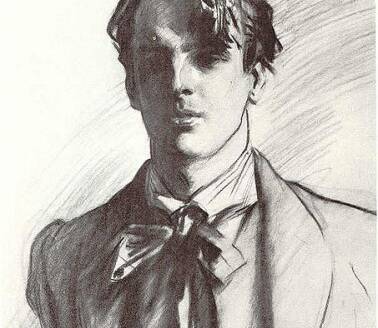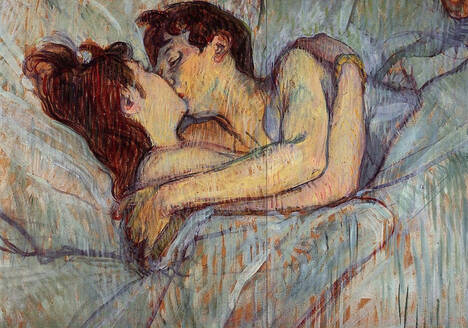Marijuana and The Power of Imagination
„Logic will take you from A to B. Imagination will take you everywhere.“
Albert Einstein
The Underestimated Value of Imagination
When we think about our capacity for imagination, we often think of it as a kind of visual daydreaming – a handy ability utilized mainly by artists and other creative people. We tend to underestimate how crucial our use of imagination is in our everyday lives. In fact, we rely on your imagination all of the time – not only when we think creatively, but also when we make decisions. You may decide not to go skiing next week because you heard the bad weather forecast and imagine it to be very cold and nasty in the mountains. Anticipating the cold wind up there in the mountains, you can literally feel a shiver going down your spine. As this example shows you do not only visually “picture” situations in your mind when you use your imagination; you also imagine sounds, tastes, smells, feelings or moods. In his seminal book Human. The Science Behind What Makes Us Unique, neuroscientist Michael Gazzaniga reminds us how powerful a role imagination plays in our lives:
“Imagination also allows us to time travel. We can go in the future and back to the past. An event may be long in the past, but I can replay it in my imagination from memory. (…) Likewise, I can project in the future. I can use my past experience of an emotion and apply it to future circumstances. I can imagine how I would feel, for example standing at the open aircraft door with a parachute on my back (terror, which I have felt in the past and did not enjoy) and decide I can bypass this adventure.”

Of course, there are more important decisions in life than those about whether we want to go skiing or jump out of a plane. When we make decisions about whether or not to marry our beloved partner, we might go through several processes of imagination: “Can I see us getting along also in times of a crisis? Do I enjoy the thought of having her by my side as a mother of our children? Will she still make me a better person in 20 years?”
It is easy to see how the capacity for imagination leads to an evolutionary advantage, as the neuroscientist Vilayanur Ramachandran observes:
“When you imagine something – as when you are rehearsing a forthcoming bison hunt or amorous encounter – many of the same brain circuits are activated as when you really do something. This allows you to practice scenarios in an internal simulation without incurring the energy cost or risk of a real rehearsal.“
Imagination is not just a nice-to-have ability mostly developed in creative professionals: we all heavily rely on our imaginative capabilities every day. Our imaginative abilities have a fundamental impact on the way we all make decisions in our lives.
The Enhancement of Imagination During a High
It is important to be reminded of the importance of imagination to understand the importance of the enhancement of imagination during a marijuana high. Many users of marijuana have reported a more vivid imagination when reading or thinking about a situation. When Harvard professor Charles Tart sent out questionnaires for his psychological study On Being Stoned, many users of marijuana endorsed the following statements for moderate levels of a marijuana high:
“If I try to visualize something, I see it in my mind’s eye more intensely, more sharply than when straight.“ (…)
“If I try to have an auditory image, hear something in my mind, remember a sound, it is more vivid than when straight.“ (…)
“If I try to imagine what something tastes like, I can do so very vividly.“
“I can experience vivid tactual imagery, imagine what things feel like and feel their texture very vividly in my mind“
As a concrete example, here is a report from a mandolin player in a bluegrass group, who writes that he likes to practice playing high: 
”I might smoke before playing. I play in a group, and I’ll sit down and do a couple of hits to put a little edge on while I’m playing. When I’m stoned, I can visualize musical relationships more easily. The other day, I was practicing scales on the mandolin, double lines of scales in intervals. Playing them high, I made more sense out of them, and finally understood when and how they might be useful in my playing.“ [1]
Why don’t we connect the dots?
Many marijuana users have experienced several enhancements of imagination themselves and have described how they use these enhancements. Some have reported that they can better visualize objects or faces and use this in their artwork; musicians feel that they can better imagine how various instruments work together and use this for musical compositions, whereas other like to get high and start cooking, using the enhancement of their imagination to come up with new ideas for food compositions, imagining how certain spices or herbs would taste with certain vegetables.
I believe that most marijuana users have experienced the enhancement of imagination during a high in some form, but underestimate the incredible cognitive potential of this effect. Why don’t they connect the dots?
There are several reasons why we tend to underestimate the potential of this imaginary enhancement. First, a still ongoing disinformation campaign that has lasted for decades has led us to focus on the risks of marijuana instead of looking at its potential (and many of the risks, as we now know, have been invented by spin doctors). Second, we tend to look at the process of imagination as a sort of conscious daydreaming and forget that we also rely on it unconsciously way more often in our everyday thinking. Third, we usually consider imagination only as visual imagination; but as stated above, imagination is much more than that. Fourth, we tend to think more of other psychoactive substances like LSD or psilopsybin when it comes to enhanced imagery and imagination, because these substances bring full-blown visual trips.
Once we understand that marijuana has the potential to enhance our imagination, not to mention how important imagination is to our cognition in general, we can better understand the many reports of scientists, artists, writers and other people who have used this enhancement for various purposes.
Scientists have often described how their imagination helped them to come to solutions to problems and great ideas. One of Einstein’s greatest insights came when he imagined what it would be like to ride on a beam of light, while the chemist Friedrich August Kekulé von Stradonitz saw the Benzedrine ring in a reverie of a snake biting its tail. The designer Philip Stark reported in an interview how he actively uses his dreams to better imagine and visualize new designs in 3D.
Naturally, a marijuana high alone will not turn you into an Einstein, a Kekulé, or a Philip Stark. But it may help you to better imagine situations, objects, smells, sounds, tastes or tactile sensations. If you are able to “ride your high“ and to use this enhancement, it could help you with important decisions, to vividly remember crucial events in your life, or to come up with life changing ideas.
Enhanced imagination and politics
The German philosopher Ernst Bloch participated in hashish experiments with his friend Walter Benjamin in 1928 and later praised the value of enhanced imagination during a hashish high in his central work “The Principle of Hope”, written between 1938-47. He compares the state of a cannabis high to that of a waking dream and emphasizes that this altered state of mind allows us to think clearly and to profit from the experience:
“(…) opium seems to be more associated with the dream of the night, whereas hashish seems associated to the freely wandering, swarming daydream. Also, during hashish intoxication the ego is hardly altered, neither its individual nature nor its reasoning ability are taken away (…) Modern experimenters have characterized Hashish dreams as of an enchanting lightness (…), in short, for the talented hashish dreamer, the world becomes a request concert.” (…) “Furthermore, hashish intoxication does not lack another kind of lightness: ‘the individual believes to see his plans disentangled and to move towards their realization, plans which seemed impossible to clarify so far.[2]”[3]

Bloch, usually considered as a neo-Marxist thinker, emphasized that humans are far more than simply the product of their environment and upbringing. His philosophy is based on an image of human as essentially striving to think ahead and to imaginatively work on a utopia. He would later become a vastly influential professor for philosophy at the University of Tübingen – where I would later study philosophy – and became friends with Rudi Dutschke, both of whom would later be considered as leading figures in the 1968 student revolution in Germany. Bloch clearly saw the positive social and political dimension of this state of daydreaming induced by hashish:
“Daydreams have no censure whatsoever from a moralistic Ego, as we can see it in the dreams of the night: their overreaching utopian Ego builds itself and its own as a cloud-castle in an astonishing unburdened blue.(…) The Self of the daydream can become so wide, that it also stands for others: (…) The sleeper is alone with his treasures, the Ego of the daydreamer can extend to others. If the Self (is) not introverted anymore or just related to its immediate environment, then its daydream seeks to improve public matters.”[4]
Ernst Bloch’s “The Principle of Hope” first appeared in 1954 and became a set text for many in the beat generation, decades before they started to daydream inspired by the use of cannabis.
In 1972, marijuana user John Lennon, who had been turned on cannabis by Bob Dylan in New York some years before, almost got deported back to the UK for having been caught with marijuana. Lester Grinspoon, who testified for Lennon during the legal process, recounts how he sat down for dinner with Lennon and Yoko Ono:
“I told John how cannabis helped me to hear his music for the first time in much the same way that Allen Ginsberg had seen Cezanne for the first time after he smoked cannabis before going to the Museum of Modern Art, to determine if marijuana could help him break through his incapacity to relate to Cezanne. It did.
John replied that I had experienced only one facet of what marijuana could do for music. He said that it also enhanced the ability for composing and making music.”[5]

Shortly before the deportation hearings, Lennon had expressed his daydreams in his song “Imagine”– the song that would later become one of the hymns of the peace movement:
Imagine there’s no countries
It isn’t hard to do
Nothing to kill or die for
And no religion, too
Imagine all the people
Living life in peace
You, you may say I’m a dreamer
But I’m not the only one
I hope someday you will join us
And the world will be as one.
[1] Novak, William (1980) High Culture. Marijuana in the Lives of Americans, The Cannabis Institute of America, Massachusetts, p. 52.
[2] Lewin, Louis (1927), Phantastica. Die betäubenden und erregenden Genußmittel – für Ärzte und Nichtärzte, p. 159 ff.
[3] Bloch, Ernst (1959), Das Prinzip Hoffnung, Suhrkamp Verlag, Frankfurt p. 100.
[4] Ibid., p. 101.
[5] “Brady, Pete” (2001), “Lester Grinspoon: Defending Medical Marijuana,” Cannabis Culture Magazine, http://www.cannabisculture.com/articles/2013.html
This essay has been originally published here: http://sensiseeds.com/en/blog/marijuana-and-the-power-of-imagination/

